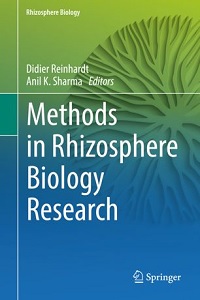Using a Tri-Isotope (13C, 15N, 33P) Labelling Method to Quantify Rhizodeposition
Belowground (BG) plant resource allocation, including roots and rhizodeposition, is a major source of soil organic matter. Knowledge on the amounts and turnover of BG carbon (C), nitrogen (N), and phosphorus (P) in soil is critical to the understanding of how these elements cycle in soil-plant system. However, the assumptions underlying the quantification and tracking of rhizodeposition using isotope labeling methods have hardly been tested. The main objectives of this chapter were to (i) review the different plant labeling techniques for each of the three elements; (ii) describe a novel method for the simultaneous investigation of C, N, and P rhizodeposition in sand; and (iii) test the methodological assumptions underlying quantification of rhizodeposition. Stable 13C and 15N isotopes were widely used to study rhizodeposition of plants either separately or in combination, while P radioisotopes (32P, 33P) were used to investigate root distribution. The combination of the 13CO2 single-pulse labeling with the simultaneous 15N and 33P cotton-wick stem feeding effectively labeled Canavalia brasiliensis roots and facilitated the estimation of rhizodeposited C, N, and P input from root systems. However, the isotope distribution was uneven within the root system for all three elements. Additionally, we observed a progressive translocation from shoot to roots for 15N and 33P over 15 days after labeling, while the 13C tracer was diluted with newly assimilated non-enriched C compounds over time. Younger root sections also showed higher specific activities (33P/31P) than the older ones. The relatively high 33P radioactivity recovered in sand right away at the first sampling was attributed to an artifact generated by the stem feeding labeling method. Overall, our results suggest that the assumptions underlying the use of isotope methods for studying rhizodeposition are violated, which will affect the extent of quantification of rhizodeposition. The consequences of nonhomogeneous labeling of root segments of different age require further investigation. The use of a time-integrated isotopic composition of the root is recommended to not only account for temporal variation of isotopes but also to improve the method of quantifying plant rhizodeposition.

